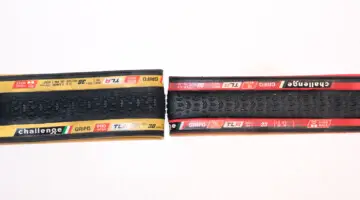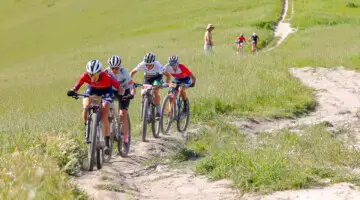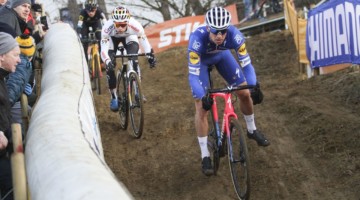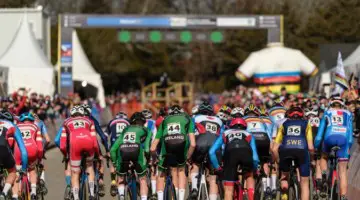Traditionally in cyclocross, gluing tubular tires has been a rite of passage at the start of cyclocross season for professional mechanics and amateur racers. Whether it be for feel, suppleness, special, limited-edition tread designs, weight savings or tradition, tubulars have been the go-to tires for cyclocross.
Most professionals—and many serious amateurs—still race with tubulars, but as tubeless setups become more reliable and tubeless myths have been exposed, tubeless tires have become dominant in the amateur ranks, and more common on the professional landscape in North America.
For those who have been paying attention over the years, it’s a trend that has been slow off the line, but now is gaining momentum.
In 2015, we saw Canadian Michal Dyck finish the World Championships as the top North American Elite, female or male, on a Kenda tubeless setup.
In 2017, at CrossVegas, we saw Michael van den Ham ride Schwalbe X-One Speed to fifth, while Rebecca Fahringer and other NoTubes-sponsored racers competed with a Maxxis tubeless setup, most recently as part of the Stan’s NoTubes p/b Maxxis program.
Those racers all turned in impressive results, but could tubeless become a regular on UCI podiums?
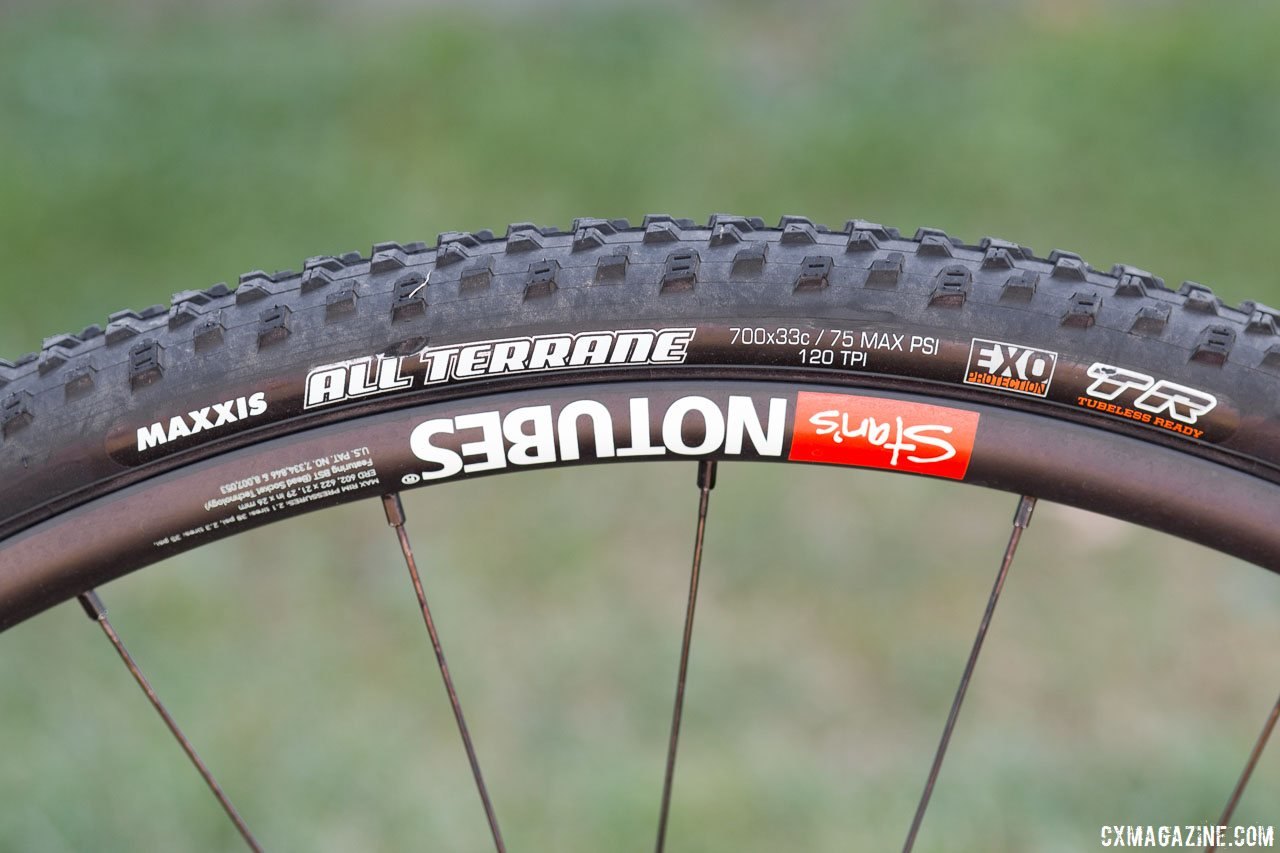
Rebecca Fahringer had success running tubeless tires last year. Rebecca Fahringer’s Scott Addict CX with tubeless Maxxis tires. © Cyclocross Magazine
The Season of Tubeless?
This year, the answer is a resounding, burp-free yes, with a number of tubeless wins and podiums.
Riders on no less than three pro teams have been glue-free this season.
The Pivot Cycles/Maxxis p/b Stan’s/DNA Cycling team picks up the Stan’s mantle as a team riding tubeless. The Squid Squad has also traded in their tubulars to go exclusively with tubeless setups, while members of the Garneau-Easton p/b Transitions LifeCare are also going tubeless, to different degrees.
Last year, Fahringer showed that athletes can race tubeless and succeed at the UCI level, with podiums at Noho and the NBX Grand Prix of Cyclocross.
The teams racing tubeless this year have also seen a ton of success.
Sammi Runnels (Squid Squad) won both days at Fields of Joy CX in Australia, podiumed in China and then won twice at the West Sacramento Grand Prix a bit closer to home. Anthony Clark (🦑) also won at West Sac and also finished fifth at Sunday’s Pan-American Championships.
Sofia Gomez Villafane (Pivot Cycles/Maxxis p/b Stan’s/DNA Cycling) podiumed at the US Open of Cyclocross and Courtenay McFadden is back with a fourth-place finish at Pan-Ams on Sunday.
And Crystal Anthony, winning at Go Cross and the Really Rad Festival of Cyclocross, has been riding tubeless this season as well.
All told, we counted at least nine UCI podiums for riders on tubeless setups.
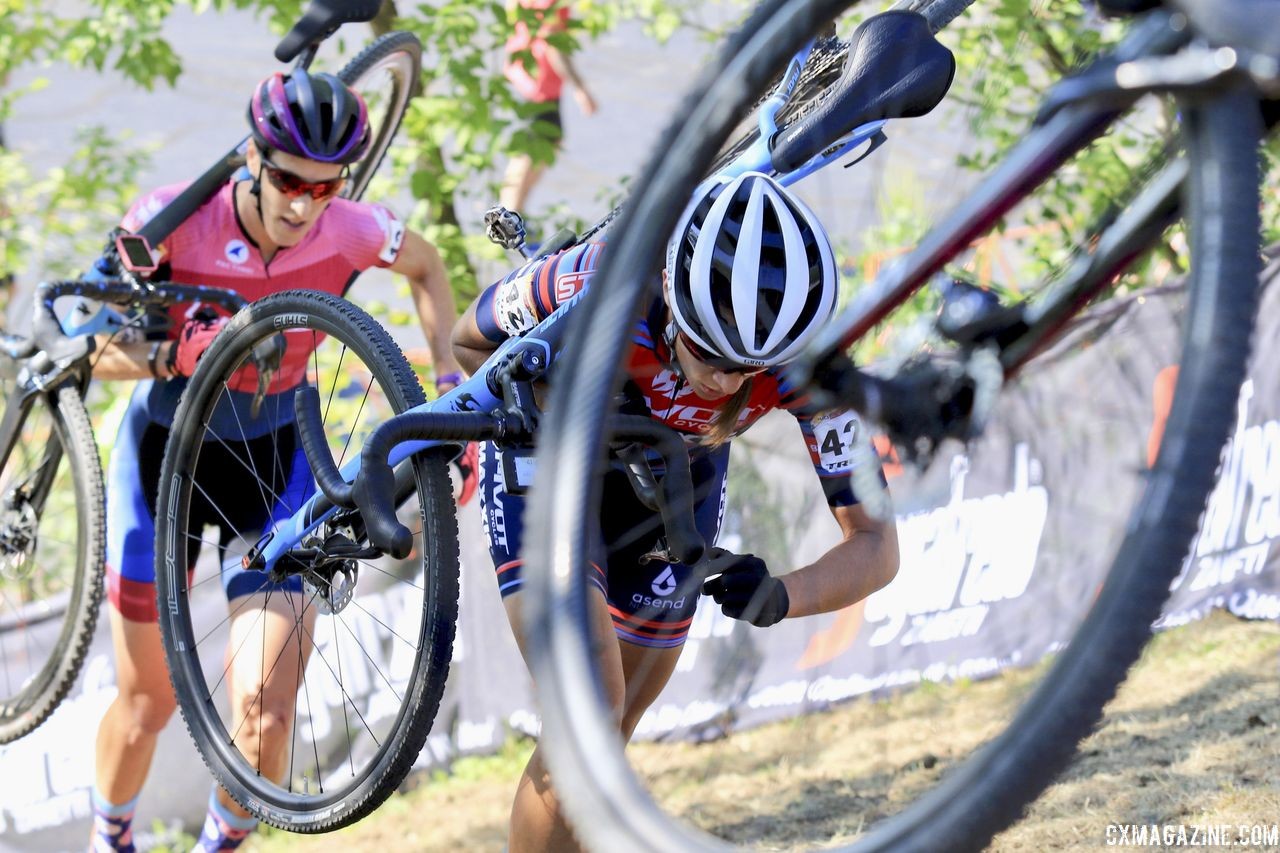
Sofia Gomez Villafane has had success running tubeless this season. 2018 World Cup Waterloo. © D. Mable / Cyclocross Magazine
So why did these teams go tubeless this year? Are they liking the ride thus far? And what does it mean for us? We asked to see how the teams’ tubeless seasons are going.
The Setups
Before we get to the why, we will start with the how.
The Pivot Cycles/Maxxis p/b Stan’s/DNA Cycling team is running, not surprisingly, Maxxis tubeless tires mounted to Stan’s new ultralight Grail CB7 carbon cyclocross/gravel wheels.
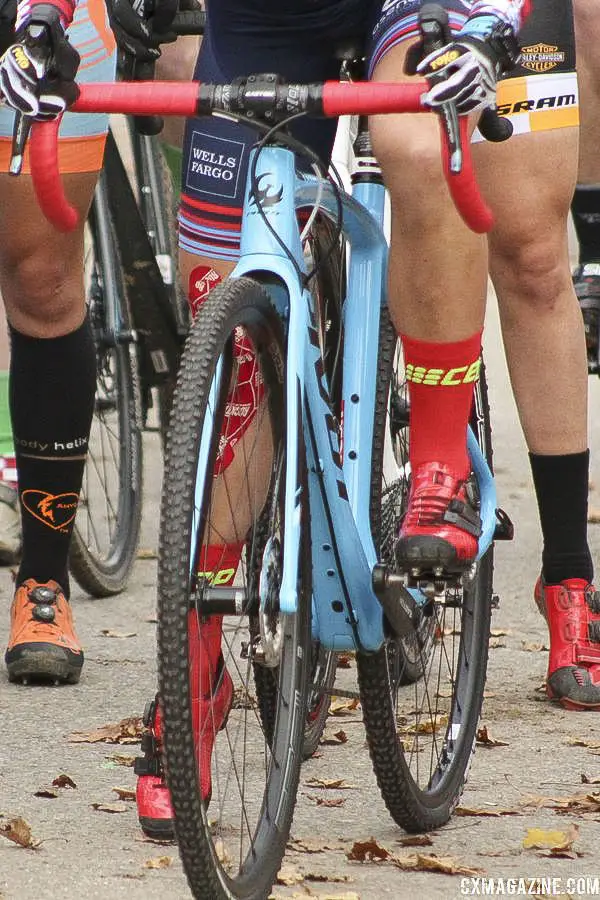
The Pivot/Maxxis team is running Maxxis tubeless tires on Stan’s Grail CB7 wheels. 2018 Pan-American Cyclocross Championships, Midland, Ontario. © Z. Schuster / Cyclocross Magazine
The Squid Squad is running IRC tubeless tires with the X-Guard bead-to-bead puncture-resistant mesh. The team mounts its tires to Zipp 303 Firecrest carbon tubeless clinchers.
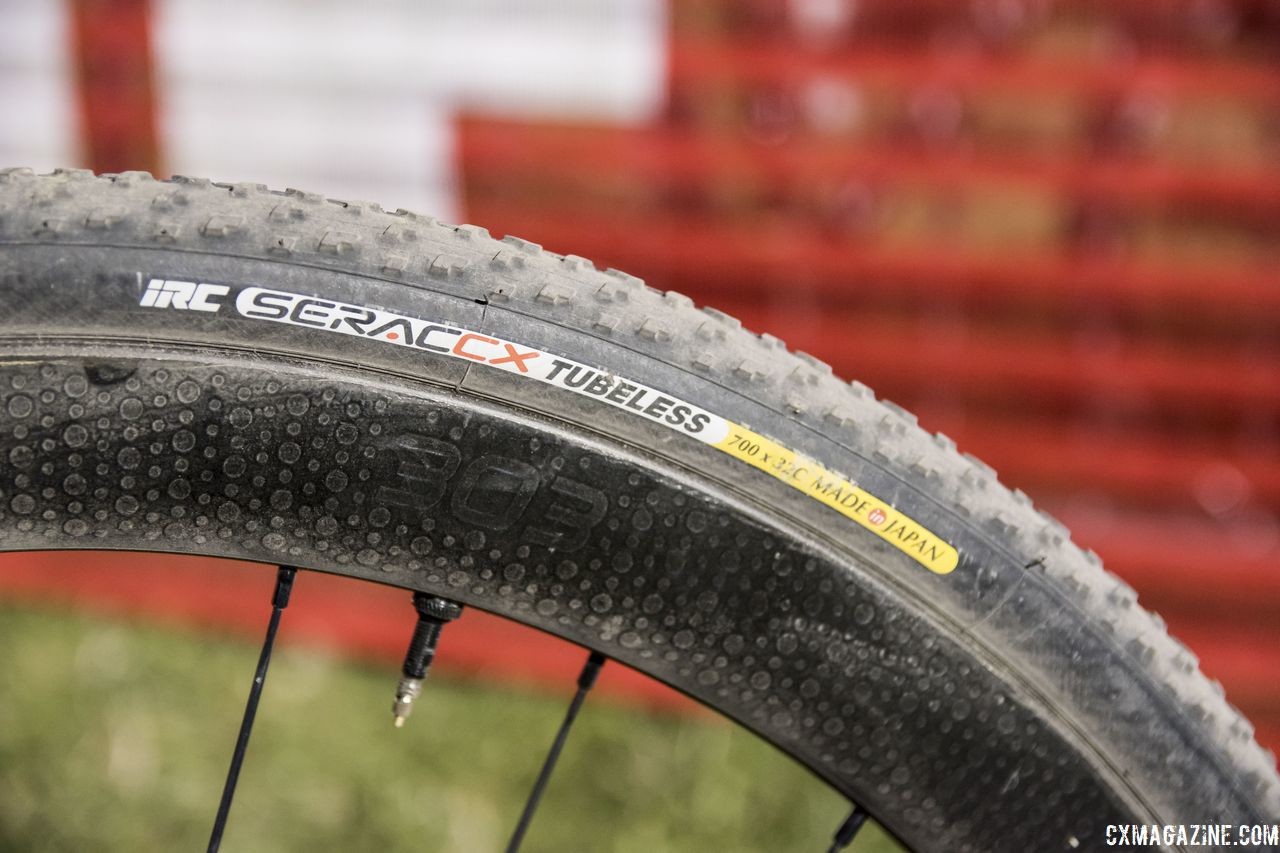
Sammi Runnels ran IRC Serac tubeless tires mounted to Zipp 303 Firecrest clinchers at RenoCross. © C. Lee / Cyclocross Magazine
The Garneau – Easton p/b Transitions LifeCare team is running Easton’s EC90 SL carbon tubeless clinchers. The team does not have a tire sponsor, so the riders run a mix of tires. Craig Richey runs Schwalbe tires, while Michael van den Ham, Jack Kisseberth, Erica Zaveta and others run tires from Vittoria’s Terreno line.
Why Tubeless?
Tubeless has its clear appeals for amateur cyclocross racers. Tubeless setups are usually cheaper than tubulars, easier to set up and allow for switching between treads relatively easily.
Professional teams have a bit more money and mechanics available, so those reasons for switching to do not necessarily apply at the sport’s top level.
The Pivot Cycles/Maxxis p/b Stan’s/DNA Cycling team switched to tubeless because the team added Stan’s as a sponsor.
The Squid Squad switched for a couple of reasons, at least one of which amateurs can identify with. One is that the team’s riders were having trouble with flats last year.
Team manager Emily Kachorek talked about the other. “So we can send it on sick trails while on the Squid World Tour. Seriously, our schedule involves a lot a international travel and ease of traveling with fewer wheelsets and training on tubeless while we are on the road is huge.”
Craig Richey has been the leading proponent for using tubeless for cyclocross on the Garneau – Easton team. Richey has ridden exclusively on Schwalbe tubeless tires for several years now. Van den Ham and some of the others have recently experimented with using tubeless tires more often, but many of them still race primarily on tubulars.
Tubeless Impressions
Many professional cyclocross racers are very in-tune with their tires, so if the tubeless setups used by U.S. pros were not working, we would likely hear about it. Thus far, riders seem happy with the transition to tubeless.
Kachorek and her team’s riders have found tubeless a nice fit. “We love it,” she said. “The sidewalls fold differently, not necessarily worse, just differently, and you can’t go quite as low in terms of tire pressure. In some ways, we think the ride quality is actually a lot better.”
After her third-place finish at RenoCross, Gomez-Villafane commented on her setup. “It’s so good, it’s so easy,” she said. “And out here I actually felt really confident in the turns. That’s actually where I ended up getting away. It definitely feels a little bit stiffer, but it’s really important to have a good rim and tire combination.”
“I’m really impressed with the tubeless setup this year,” McFadden said about the change. “I was nervous at first, but I honestly feel so much better on them versus tubulars. I’m less afraid of flatting than I was on tubulars, and the entire team has run their lowest pressures on the tubeless set up versus tubulars in the past.”
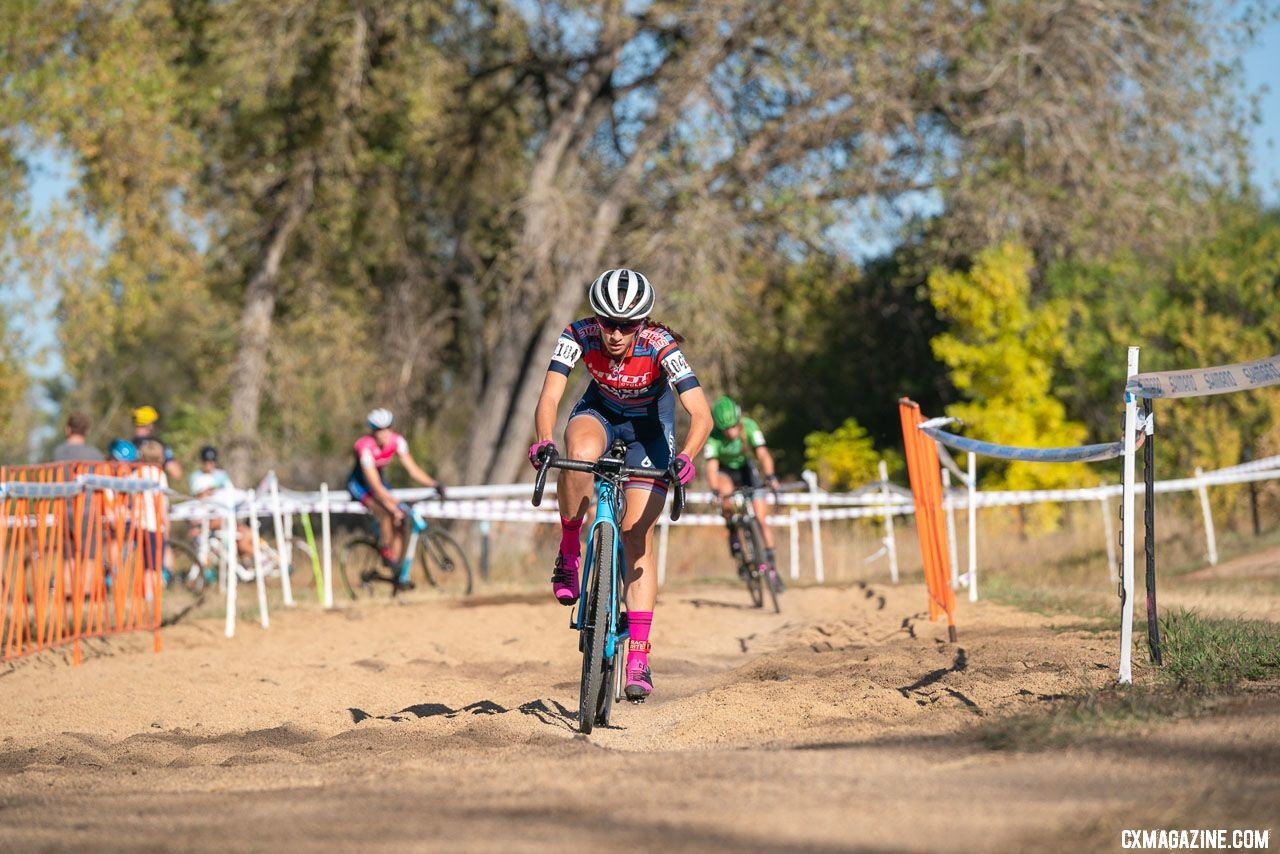
Sofia Gomez Villafane had positive things to say about the ride from her tubeless Maxxis tires and Stan’s rims. Elite Women, 2018 US Open of Cyclocross Day 1. © Col Elmore
Jamey Driscoll finished second in Reno. “I noticed zero performance decrease,” he said. “And my wheels are a lot lighter than what I used to run.” Driscoll ran around 23 psi front and 25 psi rear at RenoCross.
According to McFadden, Driscoll went even lower in the mud at Cincinnati, dropping all the way down to 17psi. Gomez Villafane ran 14.5 psi.
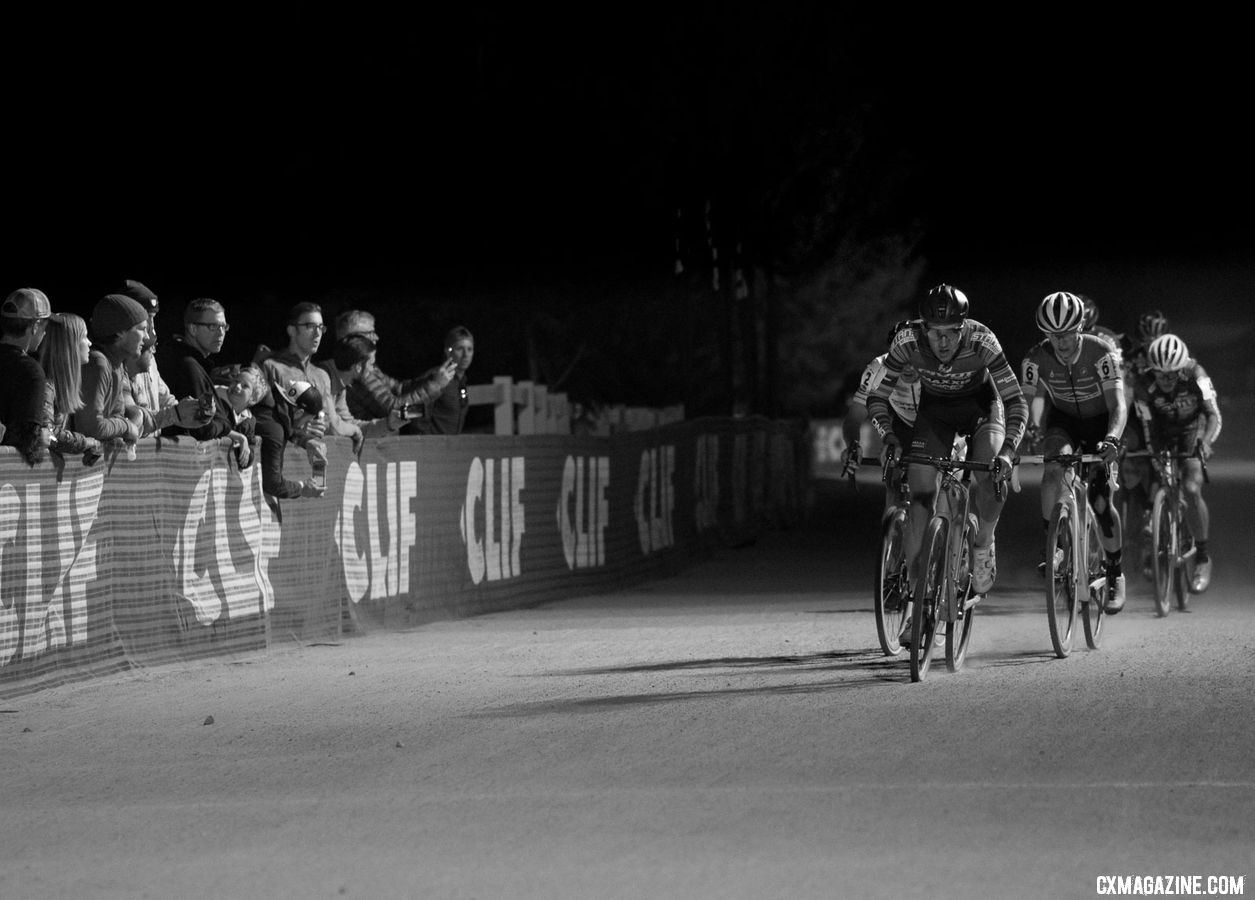
Jamey Driscoll is on a roll on tubeless this year. 2018 RenoCross men’s race. © A. Yee / Cyclocross Magazine
While some might argue that tubular tires and setups are lighter, that’s no longer always the case. Hookless carbon tubeless rims designed for low-pressure riding have reduced the weight penalty over tubular rims and many tubeless tires are lighter than tubular tires simply because they use less material.
Compare a mud-worthy ultra-supple tubeless Islabikes Greim Pro tire to another mud tubular tire like the Challenge Limus and there’s a nearly 100g weight penalty per tire, more than the 50g of sealant per wheel you might add back.
Pair such tires with a lightweight tubeless wheel like the NoTubes Grail CB7 and you’ll find a combination that is lighter than most tubular disc setups out there, as Jamey Driscoll has found.
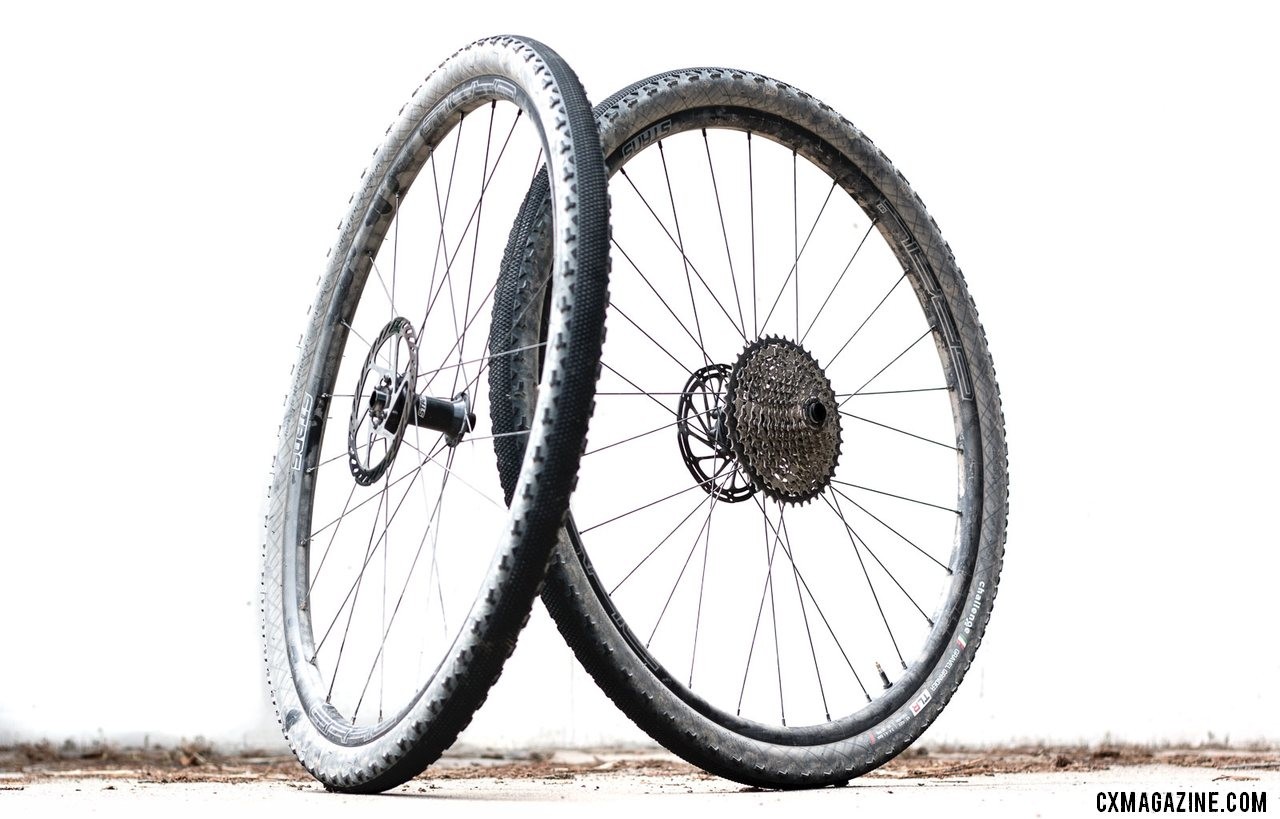
The Stan’s Grail CB7 is an ultralight option for tubeless cyclocross and gravel. © Cyclocross Magazine
What Does it Mean for Us?
The success of the Squid Squad, Pivot/Maxxis and Garneau – Easton teams running tubeless setups on the national level is a good sign that tubeless tires can be a viable option for even the best out there.
For many amateurs, tubeless makes a lot of sense because instead of having to purchase a $1,000+ set of tubulars for 12 races a year, they can purchase one wheelset and use it for cyclocross practice and racing as well as gravel and even road, depending on how wide the rim is.
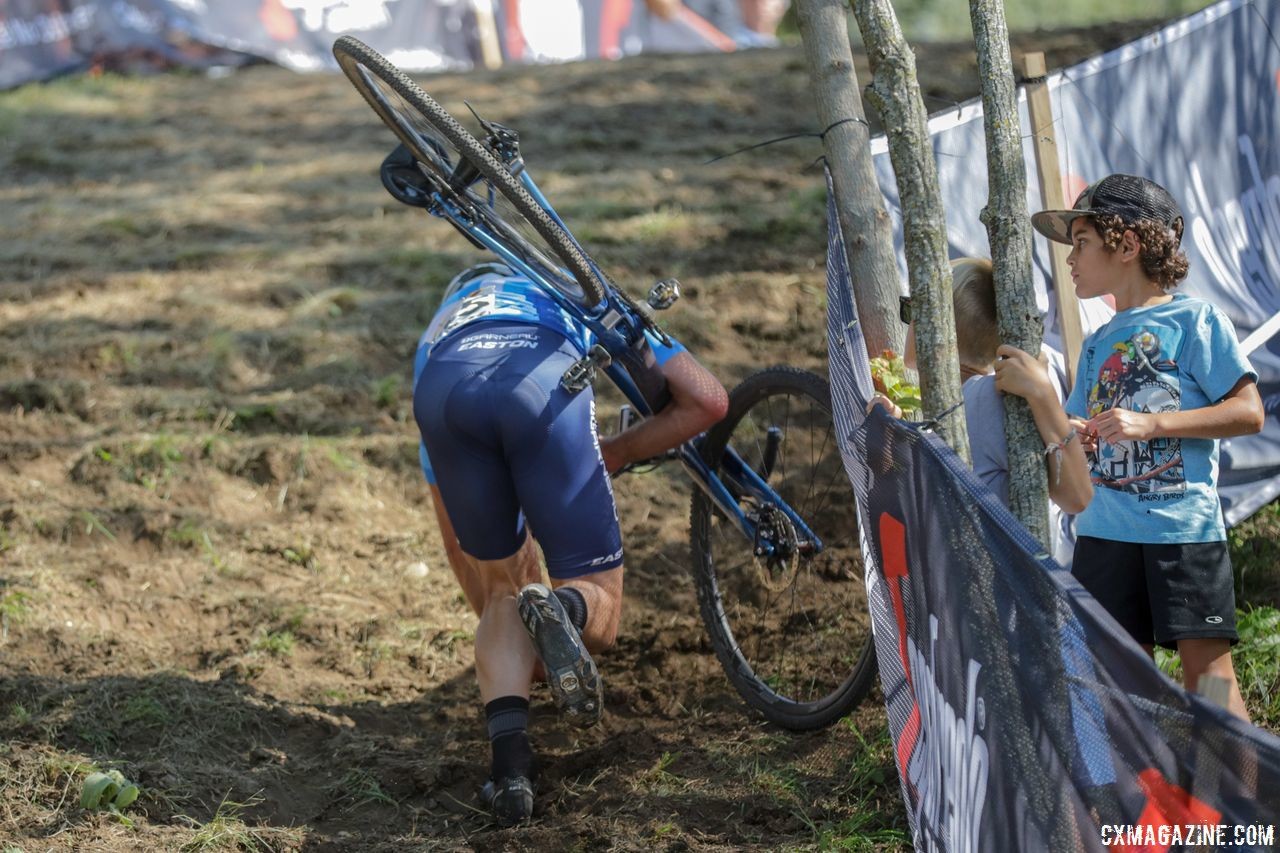
Craig Richey’s tubeless setup has been a little smoother than this run-up. He offered some food for thought for amateurs. 2018 World Cup Waterloo. © R. Clark / Cyclocross Magazine
Craig Richey of the Garneau – Easton team shared some thoughts on why he uses tubeless exclusively.
“If you’re a professional rider with near unlimited equipment and mechanical support that travels to all your races and you are able to train on tubulars then you likely should be racing on tubulars. All other riders that don’t fit this narrow criterion should be on tubeless, which is why I’m on tubeless.
Most people racing cross have jobs and or family commitments, take all that time you spend messing around with tubulars and spend it riding your bike or with family, you will be faster than the person who chose to spend their time on tubulars.
If you don’t train on tubulars then you absolutely shouldn’t race on tubulars. This is like mountain biking with a dropper post but then only racing with a static post, the bike feels and handles differently. I train and race on the exact same setup, I know how the bike and tires slid and move because I ride it in all conditions.
At the local races in BC, I consistently ride sections that everyone else runs and people are always asking what tubular tires I’m using because they assume the better grip comes from tubulars. The better grip comes from knowing exactly how the tires handle.
Similarly, I don’t ride on file treads, and therefore don’t race on them. I ride X-One Allround and X-One Bite tires only.
Keeping it simple limits the number of wheels and tires I need to maintain and travel with and well as reducing overall stress about what to use.”
Both Kachorek and McFadden agreed with Richey.
Said the Squid Squad manager, “One of the best things is getting to train daily on the tires that we race on. It really allows you to know how the tires handle under all sorts of conditions.” She added, “Overall the move to tubeless has made our life easier. We have saved money on baggage fees since we don’t need to travel with as many wheels sets.”
McFadden echoed similar sentiments, “It’s been really nice to train on what I’m racing on, since I didn’t train on tubulars when I raced them. It’s nice to be able to try different pressures at home with the tubeless set up as well, that way I can get a feel for what the low pressures feel like when I’m training and learn the limits.”
Driscoll might have summed it up best. “From a consumer perspective, you can’t beat the convenience of tubeless,” he said after RenoCross.
Cyclocross Magazine has long been a proponent of the potential of tubeless for ’cross, so we will continue to keep our eyes on how riders from these teams fare and where other tubeless setups appear on podiums here in North America.
Of course, tread, reliability, weight, cost and maintenance are all important factors in making tire decisions and there are many reasons to still stick with glue. You just can no longer claim that tubulars are the only choice for serious pros.
Zachary Schuster and Andrew Yee contributed to this story.
























